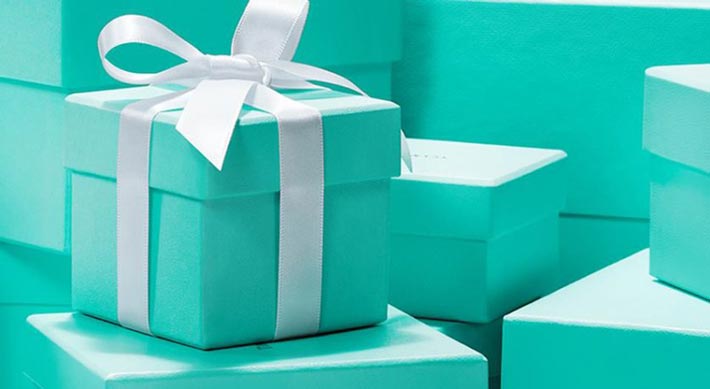Legendary luxury brand's marketing shares a few insights

An icon like Tiffany & Co., the final word in luxury goods for 180 years and counting, might not seem to need business pointers from anyone. But it turns out that when it comes to mobile, at least, the famous brand has learned a great deal in recent years—in part from watching its competitors.
This frank admission came from Catherine Lacaze, Tiffany’s vp of North American marketing, speaking at an Advertising Week panel on Tuesday afternoon.
In a far-ranging discussion, Lacaze spoke of Tiffany & Co.’s initial reluctance to put its merchandise on a mobile platform at all, not because of technical hurdles, but apparently over fears of diminishing the impact of its own merchandise.
“We were scared of showing expensive products on a tiny screen,” Lacaze said. “But people will click. That’s one lesson we learned. People sleep with that little screen.”
The marketing executive’s candor constituted a rare peek into the inner workings of the famous brand, which has historically been reticent with the press.
Lacaze spoke openly about how her department learned from other brands in the luxury space, especially newcomers known to be more agile and capable of shaking up the status quo.
“The disruptors … we need to watch them carefully,” she said.
Watching those disruptors revealed to Tiffany, for example, just how much younger shoppers like customization options with the luxury goods they buy.
“When we look at competitors,” Lacaze said, “most … are offering customization.”
Of course, Tiffany & Co. offered customization long before most any of its competitors did. “[But] we rested on our laurels too long and people forgot,” Lacaze said. Customers, she continued, “need to know we can engrave, embroider, etch or emboss anything you buy from us. It makes us rethink how we communicate with the next generation.”
One visible way Tiffany has learned to reestablish its standing and heritage with that generation, and on mobile specifically, is to deploy its signature robin’s egg blue, one of the few trademarked colors in the world of brands and one that consumers still instantly associate with the company. Which is why there’s always some visible amount of Tiffany Blue (it’s No. 1837 on the Pantone Matching Scale) anywhere you go on Tiffany’s mobile site, be it a blue background or a blue border.
“Blue 1837 is the iconic color,” Lacaze said. “Wherever [shoppers] go on mobile, we want them to feel the joy they’d feel when they get a blue box.”
“One way or another,” she added, “we’ll follow you and remind you that you’re in the Tiffany world.”
Tiffany & Co. opened its doors in New York in 1837, introducing a catalog of “stationery and fancy goods” eight years later. Though founder Charles Lewis Tiffany needed a $1,000 loan to finance his store, his high-quality goods, and the silver in particular, quickly established the Tiffany brand as one of the finest purveyors of luxury goods in the country. Nearly two centuries later, the legend still holds. Tiffany’s worldwide net sales came in at $960 million for the second quarter of 2017.
Among the company’s competitors mentioned Tuesday was Warby Parker, the eyewear brand that’s sent shock waves through the luxury eyeglasses segment by not only selling haute frames for a fraction of what designers charge, but for its groundbreaking business model of sending five pairs to customers’ homes for them to try on, accepting the returns and distributing glasses to those in need.
But Lacaze explained that Tiffany can’t borrow too much from Warby Parker’s business model.
“We can’t send five diamonds to people and make sure we get the same diamonds back as we sent and give one to somebody else,” she said. “It doesn’t translate.”
In fact, Lacaze didn’t see too many parallels between selling diamonds and eyewear, period.
“People need glasses to see,” she said. “Nobody needs a diamond.”
Source: adweek.com
